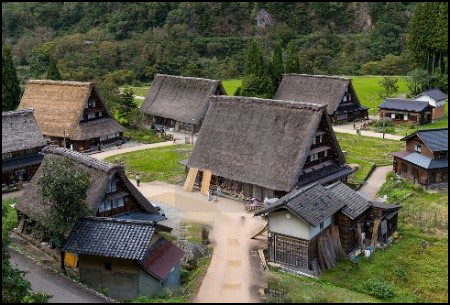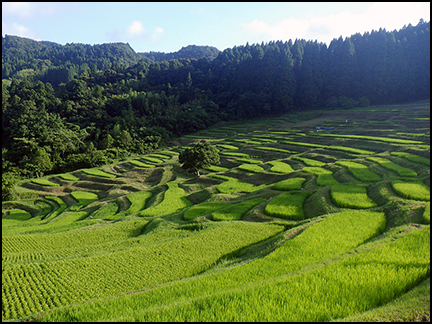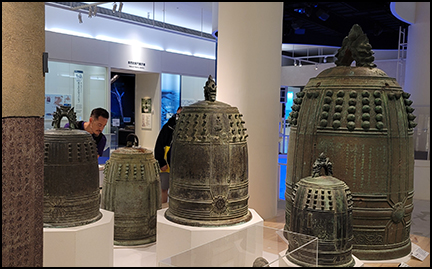

| ||
JAPANESE CULTURE |
|
Travel Back in History to a 16th Century Japanese Feudal Village
|
|
A Japanese Edo feudal village was a complex social structure that was designed to promote social order and ensure the smooth functioning of the society. The following are some of the key components of a Japanese Edo feudal village that students would learn about: |
|
 |
Samurai residences: The samurai were the ruling class of feudal Japan, and they were responsible for maintaining law and order in the village. The samurai residences were typically large, fortified buildings that were designed to protect the samurai and their families from attack. |
Visit Our Working and Vibrant Edo Village Farm
|
|
In the 16th century, Edo (now Tokyo) was a small fishing village located on the eastern coast of Japan. At the time, agriculture was a major source of food and income for the villagers, who cultivated rice, vegetables, and fruits to sustain themselves. Edo grew to become one of the largest cities in the world under the Tokugawa. One of the key features of farming in Edo village during the 16th century was the use of terraced fields. Due to the mountainous terrain in the region, the farmers had to create flat surfaces on the slopes to cultivate crops. They did this by building stone walls and leveling the soil, which allowed them to grow rice, vegetables, and other crops. Rice was the most important crop grown in Edo village, and it was planted in the spring and harvested in the fall. The farmers used traditional techniques to grow rice, including transplanting seedlings from a seedbed into the terraced fields and irrigating the crops using water from nearby rivers and streams. In addition to rice, the farmers in Edo village also grew a variety of vegetables and fruits, including radishes, turnips, eggplants, cucumbers, pumpkins, watermelons, and persimmons. They also raised livestock, such as chickens, ducks, and pigs, which provided meat and eggs for their diet. Farming in Edo village during the 16th century was labor-intensive and required the participation of the entire community. The farmers worked together to prepare the terraced fields, plant the crops, and harvest the harvest. They also used traditional tools, such as sickles, hoes, and plows, to cultivate the land. Overall, farming played a vital role in the daily life of the villagers in Edo during the 16th century. It provided food, income, and a sense of community, and the techniques and traditions developed during this time continue to influence farming practices in Japan today. |
 |
| One of the Many Exhibitions at The Feudal Village
Students and Tourists will be able to experience the many uses and importance of rice. |
|
 |
Rice is a staple food in Japan, and it has been an essential part of the Japanese diet for thousands of years. In the Edo period, which lasted from 1603 to 1868, rice was the most important crop in Japan, and it played a crucial role in the country's economy and society. As such, rice was used in a variety of dishes, and many of these dishes are still popular in Japan today. |
Listen to Stories Passed Down Through History |
|
When you visit the Martial Arts Cultural Center, you will have the opportunity to hear stories about kobudo and karate from Franco Sensei. Franco Sensei is a well-respected martial artist who has dedicated his life to studying and teaching traditional Japanese/Okinawan martial arts.One of the stories that Franco Sensei will share with you is about the history of kobudo. Kobudo is a Japanese martial art that focuses on using weapons such as the Bo (staff), Sai (truncheon), Tunkua (grind mill handle), and many others. Franco Sensei will explain how kobudo originated in Okinawa; an island at the south of Japan, where weapons were banned during the time of the Ryukyu Kingdom. To defend themselves, the people of Okinawa developed a martial art that utilized common farming and agriculture tools as weapons. Over time, kobudo evolved and became a distinct martial art that is still practiced today. Franco Sensei will also tell you about the history of karate. Karate is a Japanese/Okinawan martial art that emphasizes striking techniques such as punches, kicks, and knee strikes. Franco Sensei will explain how karate also originated also in Okinawa, where it was developed as a means of self-defense. Karate was heavily influenced by Chinese martial arts and was originally called "toudi" in the native Okinawan language Uchinaguchi which means "Chinese hand." Over time, karate expanded to mainland Japan evolving and becoming a distinct martial art that expanded across the globe. Franco Sensei will also share stories about his own over 50 years journey experiences studying and teaching kobudo and karate. He will talk about the challenges he faced when learning these martial arts and how he overcame them. He will also share insights into the philosophy behind these martial arts, such as the importance of discipline, respect, and perseverance. Overall, listening to Franco Sensei's stories about kobudo and karate will provide a fascinating glimpse into the history and culture of these traditional Japanese martial arts. |
|
Visit Our Japanese Museum |
|
 |
The Japanese cultural and martial arts museum has a variety of components that showcase the rich and diverse history of Japan's culture and martial arts. The museum would be designed to educate visitors about the traditions, beliefs, and practices that have shaped Japanese culture over the centuries. The following are some of the key components that are included in the Martial Arts Cultural Center Museum: |
| Learn Japanese at The Martial Arts Cultural Center
Meets California State Curriculum Standards and WASC Accreditation |
|
There are several reasons why the Martial Arts Cultural Centerin North County San Diego will offer Japanese language classes: Travel to Japan: As part of Franco Sensei’s continual promotion of the cultural and moral values characteristic of traditional martial arts, he takes a team to train in Japan every year. For those who plan on traveling to Japan with Franco Sensei or on their own, learning the Japanese language as well as the proper protocol of traditional martial arts at the Martial Arts Cultural Center will be something invaluable. It will help them navigate the country more easily, communicate with locals, and gain a deeper understanding of Japanese culture. |
|
The Japanese Meditation Gardens |
|
 |
Japanese Meditation Gardens in North County San Diego will be an exciting and joyful experience. |
Budo Centre, Inc. a 501-C Non-Profit organization, Franco Sanguinetti President |
||
Copyright © 2003~2025 |
||
| Please DO NOT COPY any material or photos without our approval | ||